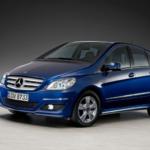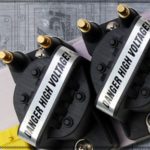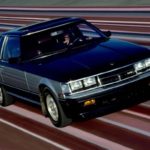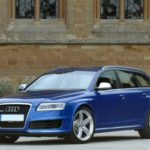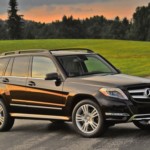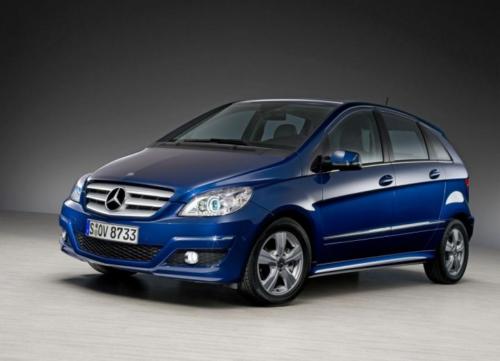MG B 1962 - 1980 - Model history
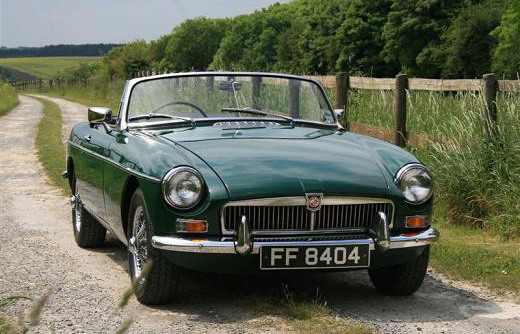
MG B
Over the years, the British auto industry has constantly radiated individuality and specific style, whether extravagant and luxury models or cars for the masses.
In such an environment, besides specific automobile brands, interesting classes of vehicles have developed that have had more or less success in the world. The most famous endemic car category born on the island are certainly roadsters. This designation signifies small, open, sporty two-seater, exorbitantly priced, high-quality driving characteristics, spartan interior and irresistible charm, which have become a trademark of the English auto industry and the subject of many fans worldwide.
The variety of models and brands that make them stands out for MG (Morris Garages), a factory that practically created this class with its roadsters, and with the MG B model and modern history of motoring. MG as a brand has existed since the 1923s, specifically since 1955, but due to the competition of many similar factories, there has been no wider affirmation of this company. After the Second World War, by the circumstances, this name became much better known and is associated with the production of small convertibles and roadsters. Specifically, a large number of Allies, especially US troops stationed in the UK, became fond of the pre-war TC and TD models, and after demobilization, almost everyone decided to transport their cars home, so when the MG A model was introduced in XNUMX , the market on both sides of the ocean was well versed in the factory.
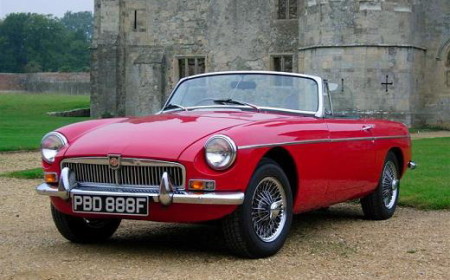
MG B
In the early 1789s, the development of a new model, which was to be the first brand new MG after many years, began. Therefore, designers and constructors did their best to present a modern concept. Namely, the car had a self-supporting body and the so-called "box" structure, which means that the engine compartment was made as one, the cabin as the other, and the boot with rear suspension as the third "box". This design has made the car extremely sturdy, which has never been a stronger side of the roadster. Although the new MG B was shorter than its predecessor, the passenger compartment was slightly larger and the driver enjoyed full instrumentation. The roof was canvas and folded, of course, by hand behind the seat. The drive was the already famous four-cylinder 94cc engine, which developed a solid 1962 hp. Power was transmitted to the rear wheels via a four-speed manual transmission. All of this was covered by a body that clearly showed the origin of the car. Enough chrome, wire wheels and design shapes that were reminiscent of almost all British classics up to that point, created a harmonious whole. The car was officially launched in XNUMX and immediately received a great market response, both in the home country and in Europe and America, where the brand has been synonymous with a small convertible in English production for years.
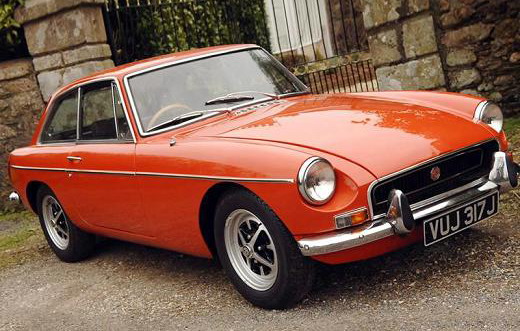
In 1964, customers were offered more accessories and elements of luxury in the cabin. Next year, MG surprises the auto world by presenting an interesting model, the MG B GT, or the coupe version. Basically, the car was the same, but the windshield was higher, which suggested a higher roof line ending with a third door. This unusual concept proved to be very practical as it also became possible to mount the rear seats, with a very narrow space, and the boot was slightly enlarged. Technically, the car was not modified and sales started well, although roadsters still made up the bulk of the specimens produced. In 1967, a new series called the Mk II was introduced. Both the Coupé and Convertible are slightly upgraded with a slightly improved transmission and automatic transmission and a rear bumper light mounted on the rear bumper, and only skilled experts can tell the difference at first glance. However, the MG year was more important because of the introduction of the Model C, which represented a muscular and sporty version that could compete with minimal modifications. The new model was delivered in both body variants and is recognized by slightly wider fenders and bonnets with the projections necessary to accommodate the new engine.
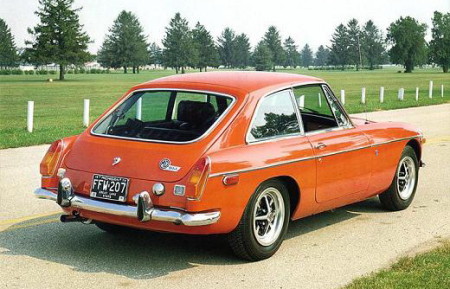
MG B
That new engine was a six-cylinder, 2912cc engine with a power of 150hp (in racing trim, about 25hp). This model was conceived to assist the racing efforts of the plant and numerous individuals, as well as to provide an adequate replacement for the Austin-Healey 3000, which has long been the best power roadster on the market. But the specialized press disliked the car and the perceived shortcomings, such as poor acceleration and poor stability, were crucial. After only two years of production, in 1969 the MG C was withdrawn from sale. An additional reason for this move was that the MG plant became part of a large British Leyland corporation, which was only interested in profits, which unfortunately did not bring this model. At that time, the production of the standard MG B model reached its peak in the late XNUMXs and early XNUMXs. The car was widely accepted, especially by the hippie generation, on both sides of the ocean and sold great. It can be said that this MG was one of the essential British cars of the sixties, standing on an equal footing with sizes such as Mini Morris or Jaguar E-Type. The next major year in the history of this model is 1973. Namely, that year another interesting evolution, called the MG B GT V8, was presented to the public.

MG B
The new model had a V8 3532ccm engine and 137 to 140 hp. The company's management saw the benefits of "living" in a large corporation, so they took advantage of the famous V8 Rover engine (basically, it was an experimental Sixty Buick unit), which was incorporated into the first Range Rover. The new drive proved to be a great solution because it was almost all aluminum, very light, even lighter than the initial four-cylinder engine. With great torque, quiet operation and enough power, the MG B GT V8 was indeed the Grand Tourismo car. Sales jumped instantly even though the new model was only available as a coupe and customers were extremely pleased. It is strange and unclear to this day why this version alone was never exported to the US, although it would undoubtedly have a large audience there. Next year, the third generation and the first major redesign come on the scene. With increasingly aggressive safety regulations in the world market, MG has been forced to mount black plastic bumpers on all models since 1974, which had to withstand a 7 km / h stroke. It affects the design of the front and rear and this opportunity has been used to modernize the interior and the range of accessories. This latest period of model development is known as the “rubber bumper era”. Two years later, in 1976, the MG B GT V8 withdrew.
This, somewhat unreasonable, company decision was explained by a lack of engines and an oil crisis, as the V8 was still a solid consumer. What is weird is that at the time of the withdrawal, the GT V8 was a perfectly sold car. In any case, the end was in sight and in the late seventies this model was slowly giving way to the market. The last specimens were produced in 1980 and shortly afterwards, MG as a brand was put out. The total number of copies produced is 512243 pieces, one of which was on our streets. Even today, it is quite unclear why British Leyland consciously stifled this model and the failure of the plant is only attributed to mismanagement. Except on the street, MG B was also common on tracks and relays around the world. Adequate construction, reasonable price and always decent performance made it the favorite race car of many private teams on both sides of the ocean. This model even won the class at the Monte Carlo Rally and was a regular guest on the Sebring, Le Mans and other famous racetracks.
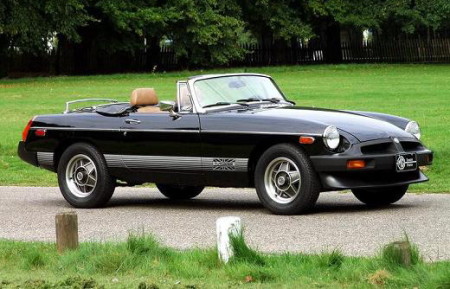
MG B
Today, the MG B is, in all versions, a much-loved old timer that offers a lot of enjoyment and real usability for little money. There are frequent clubs around the world that bring together the owners of this car, and because of its high production and popularity, across the globe, parts, information and experiences are not difficult to find. In our country, as already mentioned, there were quite a few, and several well preserved specimens are still in use. It would be a real shame if they didn't have the most typical English roadster in our car treasury, which still, today, is equally powerful, captivating with its shape, spirit and charm.
Author: 426 Hemi
Retrieved from: www.brzabrzina.com
Recommendation of similar texts:

Hi there, I am Mladen and I am an auto enthusiast. I started this blog years ago to help like minded people share information about latest cars, car servicing ideas, used car info, exotic cars, and auto technology. You will find helpful articles and videos on a wide variety of cars - Audi, Mercedes, Toyota, Porsche, Volvo, BMW and much more. Ping us if you have anything cool to share on latest cars or on how to make older cars more efficient, or just want to say hi!

